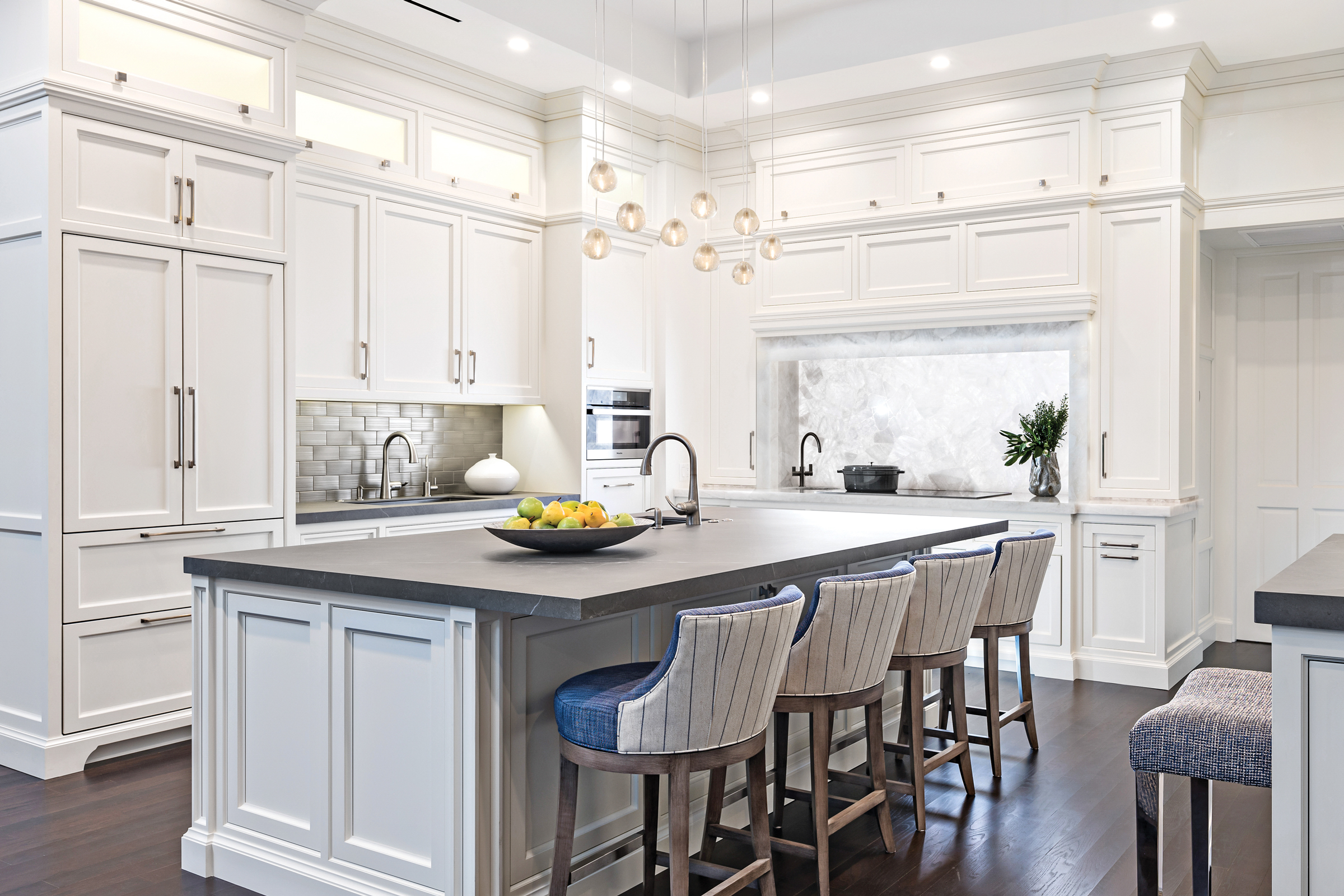Story at a glance:
- General Finishes shares the evolution of wood coatings.
- Water-based finishes don’t pollute the environment like oil-based finishes do.
- Rich, dark colors of General Finishes water-based stains are unmatched by oil and solvent formulas.
Wood coatings have reached a new inflection point in recent years. Where once the prevailing finishes were made of waxes, oils, and toxic ingredients, there is now an emerging market of water-based wood finishes that surpass their traditional counterparts in quality and user expectations.
General Finishes, a Wisconsin-based wood coatings manufacturer founded in 1928, has been a pioneer in the water-based technology revolution. General Finishes works relentlessly to formulate high-quality waterborne coatings equal to or better than any oil or solvent finish.
“Many people are surprised at the quality of today’s water-based finishes, and they’re getting better all the time,” says Ryan Denny, technical director for General Finishes.
Here are a few reasons to make the switch to water-based wood finishes.
1. Environment & Health–Friendly
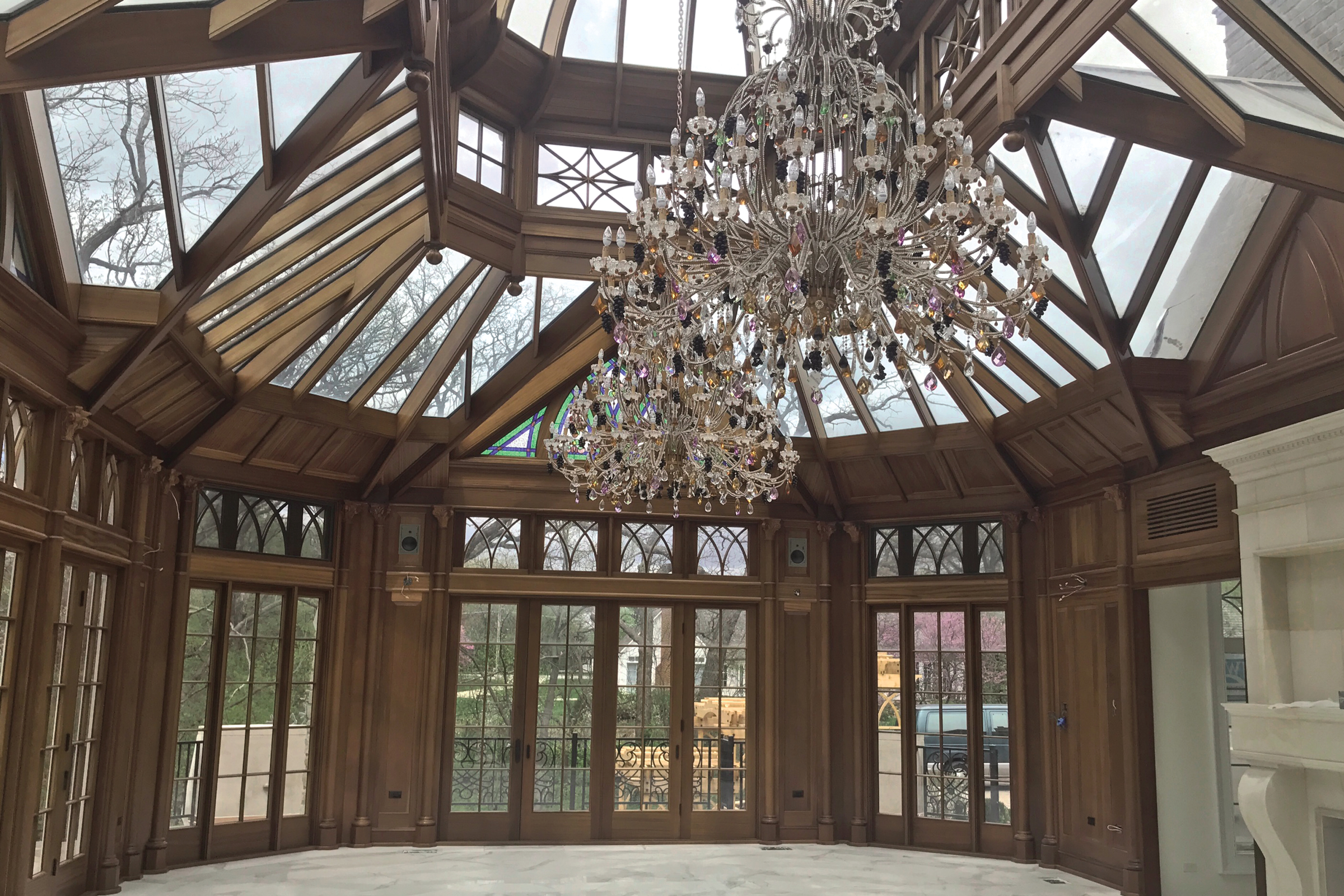
This private observatory was finished with General Finishes Exterior 450 Water Based Stain and Exterior 450 Topcoat over cherry. These exterior stains contain UV absorbers to help stabilize the stain color in sunlight and mildewcides to retard mold growth. Photo courtesy of General Finishes
Water-based finishes don’t pollute the environment like oil-based finishes do. They are low-VOC, non-flammable, easy to clean up with soap and water, and disposal is simple. They eliminate fire hazards. “They are noncombustible, so they lower insurance costs,” Denny says.
Solvent or oil-based products require additional solvents for cleanup. This creates hazardous waste that is costly to dispose of and has to be reported to the DNR, whereas water-based waste disposal is a fraction of the cost and does not need to be reported because it is non-hazardous.
Several General Finishes waterborne products are made with more than 50% renewable resources—formulated from sustainable materials that decrease the carbon footprint. Those products include Enduro-Var II, an ambering water-based topcoat; Milk Paint, a premium interior/exterior acrylic paint for cabinets and furniture; Water Based Wood Stain; Exterior 450 Stain; and Wood Turner’s Finish.
In addition to being environment-friendly, water-based finishes are safer for your health. “There are less VOCs off-gassing, so the finishes don’t give off harmful, unpleasant odors that can last for months,” Denny says. The fumes and odors are so low you can finish work onsite without the headaches that solvent-based finishes can cause. General Finishes wood coatings are VOC-compliant in all states—that’s critical considering the EPA is tightening VOC restrictions for all finishes.
2. Rich, Brilliant Color
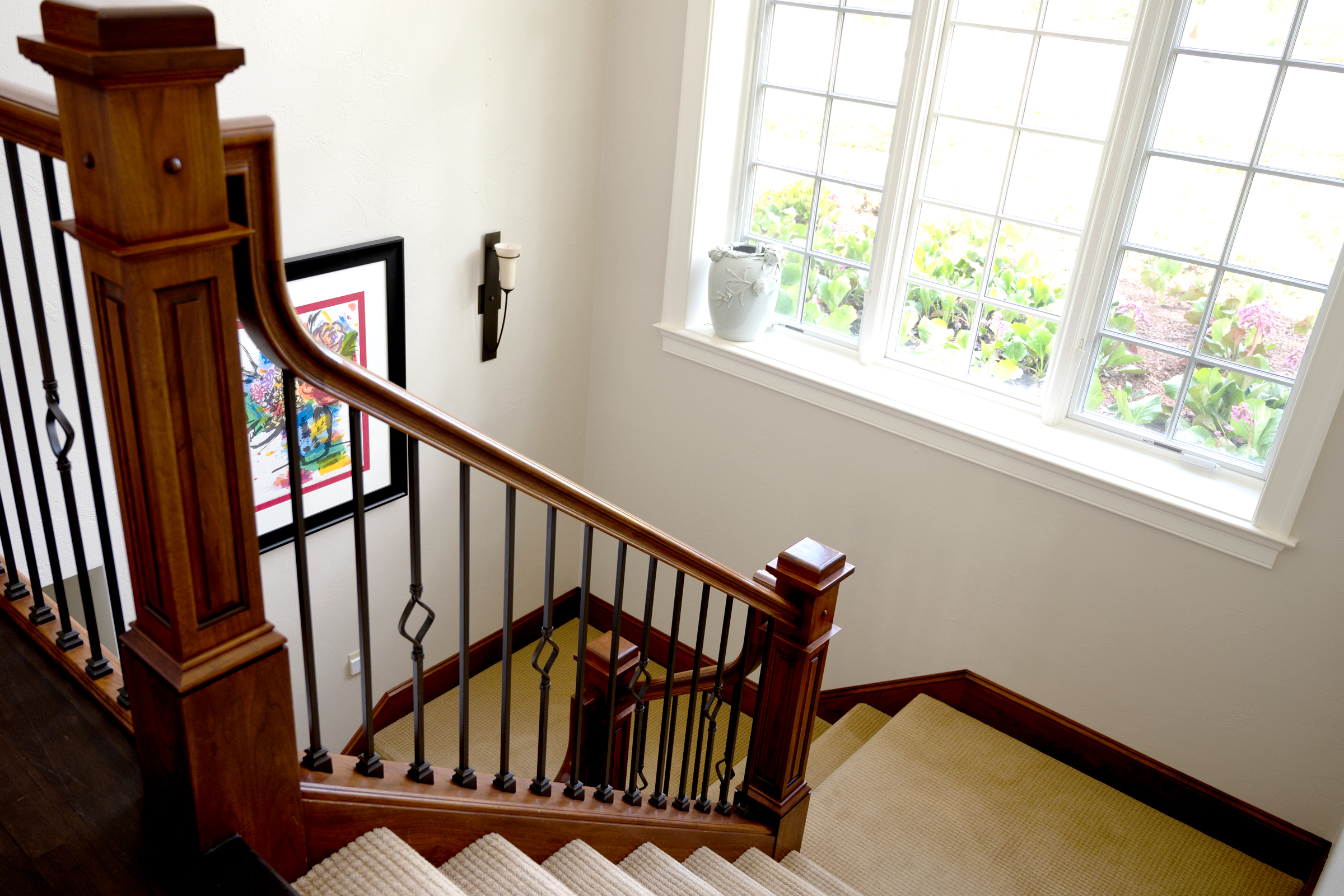
General Finishes Water-Based Wood Stains produce deep, rich colors for a clean, uniform appearance when applied to hard-to-stain woods like pine, birch, maple, poplar, and cherry. Photo courtesy of General Finishes
The most common concern for architects and designers is color. Getting dark color, even over difficult wood species, is easy with water-based stains. “Wood likes water,” Denny says. “It opens up and allows water to get deeper for better penetration of color.”
General Finishes formulates a broad range of colors in paints, polys, stains, and glazes; and unlike other manufacturers, they may be custom-tinted to closely match existing colors. “We do color better than any other wood coatings manufacturer. And we’ll customize colors to give our customer and the contractor what they need to do the job,” Denny says.
The rich, dark colors of General Finishes water-based stains are unmatched by oil and solvent formulas, with little to no color pull. The high-quality micronized pigments in these stains impart exceptional color and clarity on challenging woods such as mahogany, walnut, maple, and pine.
General Finishes also has a portable, easy-to-use stain color-matching system for professionals called the RTM (Ready-to-Match) Stain System. “We developed RTM years ago based on the old solvent-based color system to reduce waste of costly raw materials when color-matching,” Denny says.
“The 13 stain bases in the system contain dyes and pigments to produce a unique, endlessly variable color palette with depth and grain pop. RTM is versatile without a lot of investment, and pros like having the ability to color-match on site.”
3. Equal or Better Performance
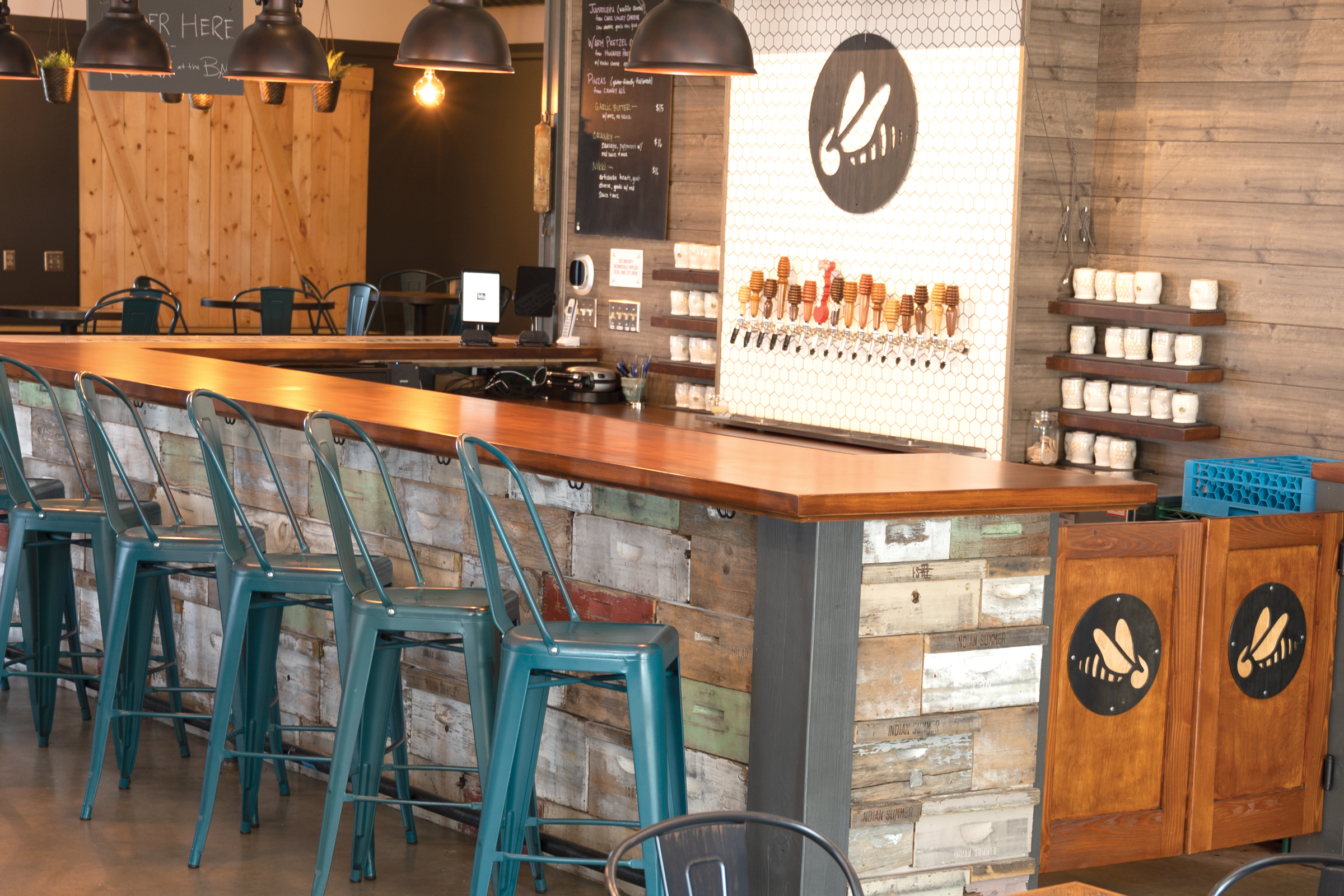
This commercial bar top was finished in General Finishes Water Based Conversion Varnish—a clear 2K topcoat for high-use commercial and residential applications inside and out. General Finishes’ most durable topcoat outperforms solvent-based conversion varnishes. Photo courtesy of General Finishes
Some in the industry are still operating under the misconception that water-based finishes have slow dry time compared to lacquer and lack longstanding durability. However, with waterborne products, you can complete two or three recoats in a day, depending on your equipment. Although water coatings won’t flash off as quickly as lacquer, when you factor in sanding and spray times, the timeframe from start to finish is about the same. To speed up the process, experts advise using infrared light and increasing air movement.
General Finishes’ waterborne coatings are equivalent to or outperform high-end solvent finishes in terms of overall durability and chemical resistance while maintaining environmental friendliness and fast dry times. Their business model is to produce premium finishes using the highest-quality resins, binders, and additives in their coatings. All of their products exceed KCMA performance requirements and are formaldehyde-free and HAPS-free.
One example of the quality of General Finishes’ water-based products is the High Performance Polyurethane Topcoat, winner of Fine Woodworking’s “Best Overall Choice Award.” It is a fast-drying clear coat for interior use that provides high durability over raw wood, glazes and stains.
4. It’s Easy to Make the Switch
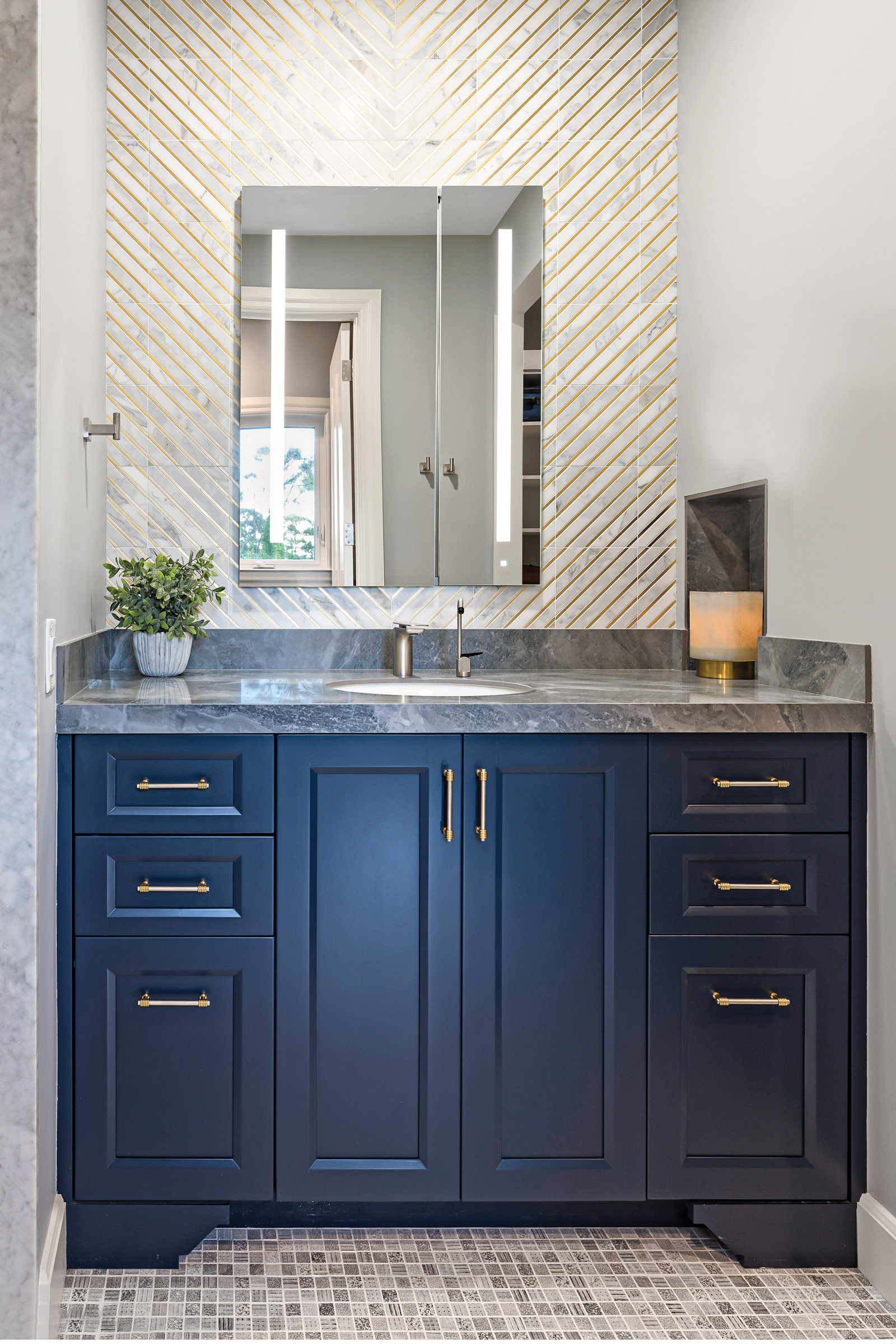
General Finishes pigmented polys are acrylic/urethane pigmented topcoats that exceed the durability of solvent lacquers and are on par with solvent-based 2K conversion varnishes for a cabinet-quality finish. They excel over wood and MDF. Custom tinting is also available. Photo by Ron Rosenzweig
Many people stay with solvent finishes because they assume moving to water will be a costly, complicated process. In reality, converting from solvent to water requires only small changes in equipment accessories and application technique.
“All you really need is to clean your spray guns really well and, possibly, new tips,” says Denny. “In some instances you might have to change a hose. Other than that it’s just a minor learning curve for millage, pumps, and air pressure to achieve your desired finish. Most find our water-based finishes easier to use than what they were using before.”
Denny says General Finishes is here to help, and they communicate well with customers, giving them a solution to their finishing problems and exceeding expectations. “Water-based coatings are the future of finishing. You may not be using them today, but you will be in the next five years.”

